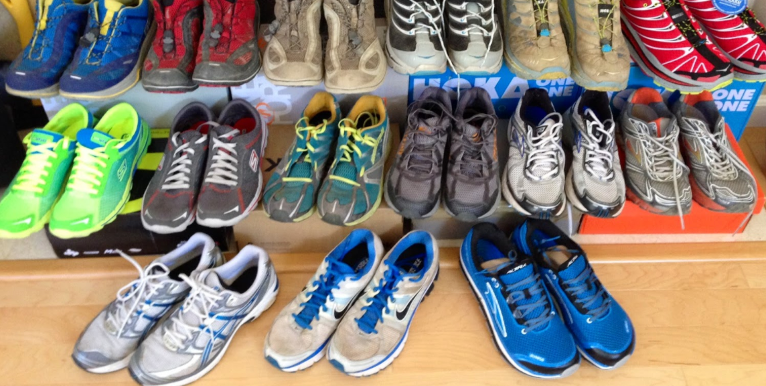Plantar fasciitis, we often hear about the injury, but what exactly is it? The aim of this blog is to address perhaps the most important questions for those suffering with plantar fasciitis, these include;
The plantar fascia is an extremely strong ‘fibrous’ structure that is located on the bottom of our feet. This ‘fibrous band’ runs from the heel to the base of the metatarsals (toes) and it plays a vital role in the make-up of our feet aiding in weight-bearing, movement (e.g. running) and maintaining the medial arch of the foot.

Plantar fasciitis is an injury that is typically related to some sort of increase in training load and/or overuse over a short time period. The injury is associated with a many sporting injuries, however it is most common in both recreational and elite runners (Petraglia, Ramazzina & Costantino. 2017).

The road to recovery is sometimes a complex one with various treatments explored, resulting in lengthy periods of time on the sidelines. Plantar fasciitis results in changes to the plantar fascia at the attachment to the heel and the injury can cause changes to the plantar fascia with or without inflammation (La Porta & La Fata. 2005). These changes most commonly result in symptoms such as stabbing and/or localised pain first thing in the morning in the heel of the foot. Other symptoms include pain becoming worse at the end of the day with the heel tenderness when weight-bearing - the red circle on the image shows the common pain site.
Although not always will there be one ‘single cause’ of plantar fasciitis, most of the factors related to the causation of the injury can be resolved once known, addressing these factors are a great way to start a fast recovery and studies have shown the most common risk factors associated with the development of Plantar Fasciitis are:
Given that we know what potential factors may be playing a role in the development of the injury, we can now look at ways to address these issues. Although it may be challenging to address some or all of the associated risk factors in the short-term (days), the good thing about many cases is that these risk factors can be addressed in the medium (weeks). Let’s have a look at some examples of ways to approach addressing these factors;

Improving angle joint range of motion can be achieved with daily calf stretches and mobility exercises. The aim is to improve the ability of the ankle joint to move through a wider range, improving flexibility. This can be performed easily on a regular basis, and often has an analgesic effect, helping with pain. An example of this would be performing a calf stretch on a step (Image 3) and holding for 25-30 seconds performing 3 sets daily.
Whilst standing for prolonged periods of time can be a potential risk factor of the development of plantar fasciitis, some people need to be able to stand due to work. Footwear modification and/or activity modification can help reduce symptoms and allow for load to be tolerated with a gradual approach. An example of this would be, finding a pair of shoes that help prolonged weight-bearing and increase the ability to walk and exercise. Sometime padding and inserts can also be effective in reducing symptoms within the early stages of the injury (Baldassin, Gomes & Beraldo. 2009).

Studies have shown that Plantar fasciitis is another pathology sometimes associated with an increased body mass and/or lack of exercise. Often a more individualised approach is needed here to determine the best strategy for a weight management plan, e.g., increase daily exercise, improve eating habits/ lifestyle changes etc.
Perhaps the most challenging patients to treat are runners suffering from plantar fasciitis as activity modification is not popular. Modification of training including periodisation and cross training can be very helpful and the reduction in weekly load can see vast improvements in a short period of time.
Ultimately the best recovery plan is one that is tailored to the individual’s symptoms, lifestyle, and activity level rather than following a treatment ‘formula’. Whilst studies show that approximately 80% of all people with plantar fasciitis make a full recovery within 12 months (Buchbinder, 2004) many recover at a much faster rate.
Need some help with your foot pain? Book in with James, our podiatrist and lover of all things feet to get you back on your feet!
WE WOULD LIKE TO ACKNOWLEDGE THE BOON WURRUNG AND WURUNDJERI PEOPLES OF THE KULIN NATIONS WHO ARE THE CUSTODIANS OF THE LAND ON WHICH WE GATHER. WE PAY OUT RESPECTS TO THEIR ELDERS, PAST, PRESENT AND EMERGING.